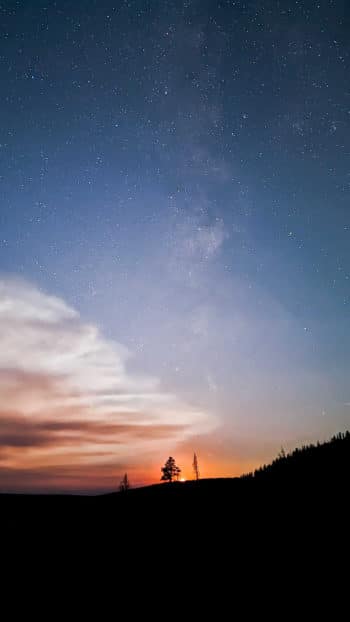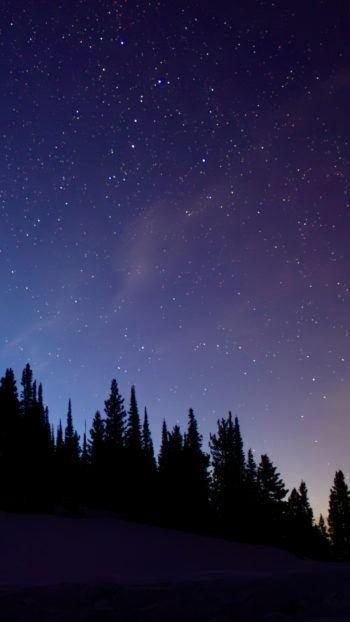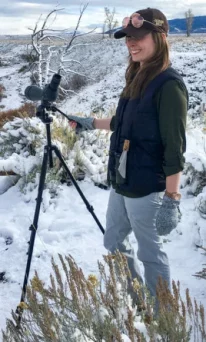Yellowstone National Park is famous for its geysers, wildlife, and breathtaking landscapes, but after sunset, the park reveals another natural wonder—one of the most incredible night skies in the world. With minimal light pollution, high elevations, and wide-open spaces, Yellowstone offers unmatched stargazing opportunities. Whether you’re visiting in summer for Milky Way views or hoping to catch a meteor shower in fall, this complete guide will help you plan the ultimate Yellowstone stargazing experience.
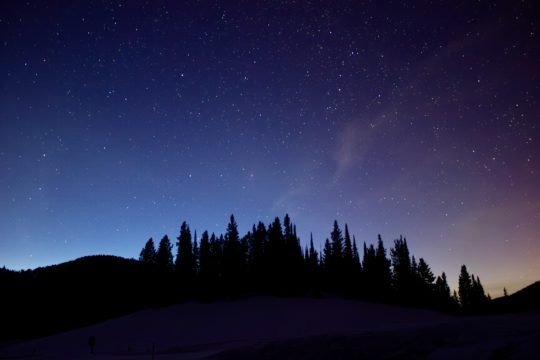

Why Yellowstone is One of the Best Places for Stargazing
Yellowstone National Park is one of the best places in the United States for stargazing due to its remote location, minimal light pollution, and stunning natural landscapes. Whether you’re an avid stargazer or a beginner, the park’s pristine environment ensures a truly magical stargazing experience.
Protected Dark Skies and Minimal Light Pollution
Protected dark skies and minimal light pollution are key factors that make certain locations, like Yellowstone, exceptional for stargazing. Protected dark skies refer to areas that have been designated for their commitment to preserving natural nightscapes, free from the harmful effects of artificial lighting. These areas are managed to reduce light pollution, which can obscure the beauty of the night sky and hinder astronomical observations.
High Elevation for Crisp, Clear Views
High elevation is another major benefit for stargazing, as it offers crisp, clear views of the night sky. At higher altitudes, you’re above more of the Earth’s atmosphere, which reduces air pollution, humidity, and atmospheric distortion that can blur the stars. This means you can see celestial objects with greater clarity and brightness in Yellowstone’s dark sky.
The Park’s Commitment to Night Sky Conservation
Yellowstone National Park actively works to protect its pristine, natural nightscapes from the harmful effects of light pollution. This commitment includes reducing artificial lighting within the park, using energy-efficient fixtures, and educating visitors about the importance of preserving dark skies. By implementing measures to limit light pollution, Yellowstone ensures that its nighttime environment remains as natural and unspoiled as possible, allowing for a truly awe-inspiring view of the stars.
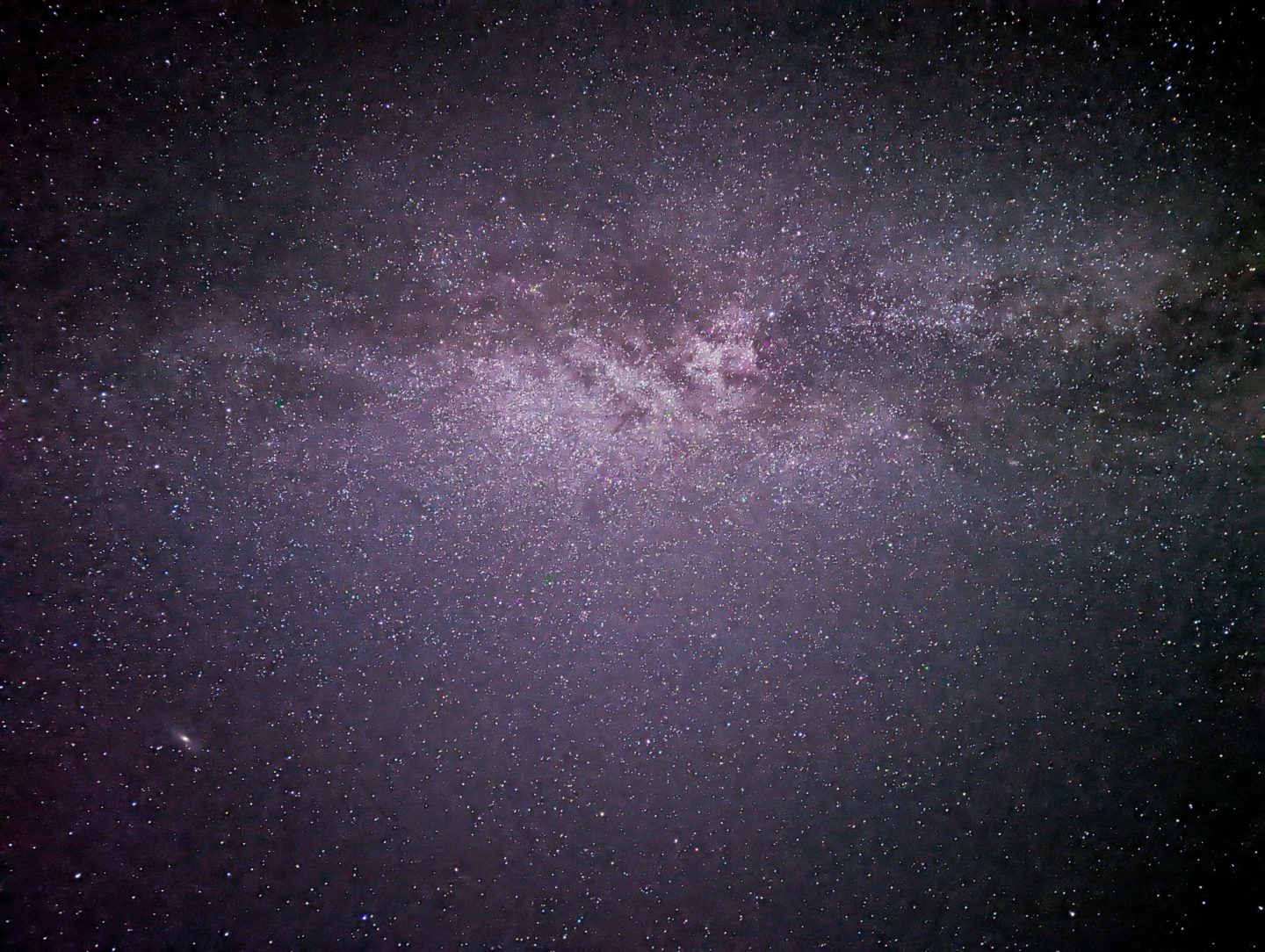
Best Times of Year to See the Night Sky in Yellowstone
The best time for stargazing in Yellowstone is typically during the summer and fall months, when the weather is more stable. Here’s a breakdown of what to expect each season:
Spring & Fall – Ideal Balance of Darkness and Weather
Spring and fall offer the perfect balance of dark skies and mild weather for stargazing in Yellowstone. In spring, clear, crisp air and fewer crowds provide excellent visibility and early views of the Milky Way, while fall brings cooler temperatures and sharper skies for ideal stargazing conditions. Both seasons offer a peaceful, comfortable experience with fewer tourists and the added beauty of Yellowstone’s landscapes, making them the best times to enjoy the stars.
Summer – Best Time for Seeing the Milky Way
Summer is the best time for seeing the Milky Way in Yellowstone. The warmer temperatures also make for more comfortable stargazing, though occasional thunderstorms can roll in. Late summer, especially August, offers some of the best views of the Milky Way, with its bright, sweeping band visible across the sky in full glory, making it an unforgettable stargazing experience.
Winter – Crystal-Clear Skies and Possible Northern Lights
Winter in Yellowstone offers crystal-clear skies and the potential to see the Northern Lights, making it a unique time for stargazing. The cold, dry air reduces atmospheric distortion, providing sharp, vivid views of celestial objects. The low temperatures and snow require preparation for a comfortable experience.
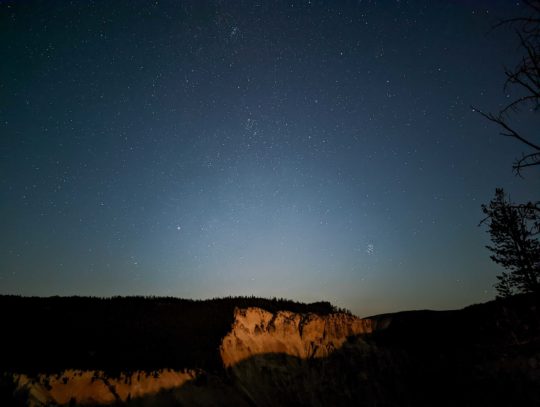
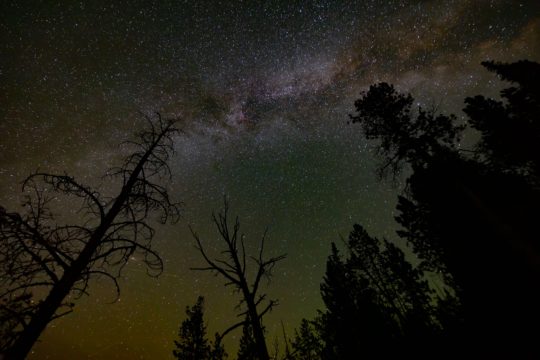
The Best Stargazing Locations in Yellowstone
Yellowstone offers several prime spots for stargazing, each with minimal light pollution and stunning views of the night sky. Here are some of the best stargazing spots in Yellowstone:
Lamar Valley – Expansive Views and Deep Darkness
Known as “America’s Serengeti,” Lamar Valley offers wide, open spaces with minimal light interference, making it a perfect spot for stargazing. Its remote location and high elevation provide clear, unobstructed views of the night sky. It is great for spotting the Milky Way in Yellowstone, constellations, and deep-sky objects.
Yellowstone Lake – Stunning Reflections of the Night Sky
The area around Lake Yellowstone offers wide, expansive views of the sky, especially at the western shore. The lack of nearby light sources makes it an excellent location for stargazing. The lake provides a reflective surface for the stars, making the view of the Milky Way particularly breathtaking.
Mammoth Hot Springs – Unique Geothermal Formations Under the Stars
Mammoth’s high elevation and proximity to the northern entrance make it an accessible stargazing spot. It’s often quieter, and with limited artificial lighting, the skies are quite dark. From here, you can admire the Milky Way, planets, and occasionally the aurora borealis during winter months.

What to Bring for a Perfect Night of Stargazing
To ensure a perfect night of stargazing in Yellowstone (or anywhere), it’s important to come well-prepared. Here’s a list of essentials to bring for an optimal experience:
Essential Gear – Red Flashlights, Binoculars, and Star Maps
Essential gear for stargazing includes a red flashlight to preserve your night vision, binoculars for enhanced views of stars, planets, and constellations, and star maps or apps to help you navigate the night sky. A red flashlight is crucial to avoid disrupting your ability to see in the dark, while binoculars allow for closer observations of celestial objects. Star maps or apps help you identify constellations and planets, making your stargazing experience more enjoyable and informative.
Dressing for the Cold – Staying Comfortable During Night Viewing
Even in summer, nights in Yellowstone can get chilly, so bring layers like a warm jacket, gloves, and a hat. In winter, the temperatures can drop significantly, so be sure to bundle up with thermal wear and a good coat. Consider bringing a cozy blanket to sit on or wrap around you for extra comfort while stargazing.
Using Stargazing Apps for Real-Time Celestial Navigation
Stargazing apps are invaluable tools for real-time celestial navigation, allowing you to easily identify stars, planets, and constellations as they move across the sky. Apps like SkySafari or Stellarium use your phone’s GPS to map out the night sky, showing you exactly what’s visible at any given time and location. These apps often include features like augmented reality, letting you point your phone at the sky and get a real-time display of the stars and their names, making stargazing both fun and educational.
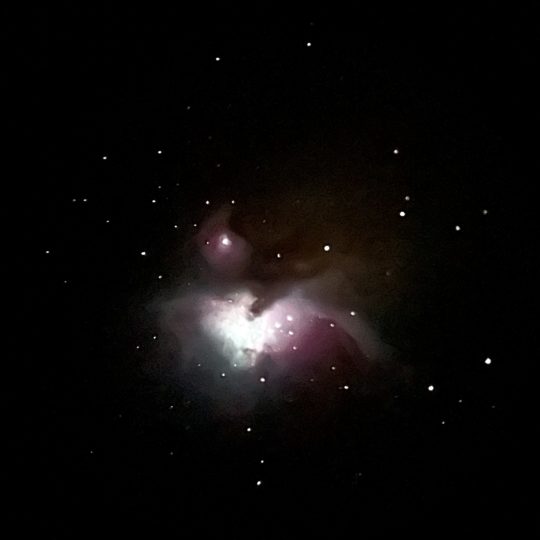
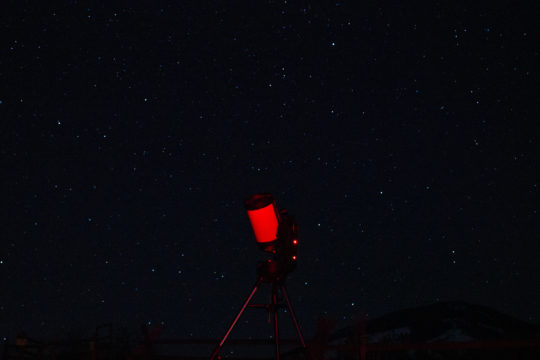
How a Guided Stargazing Tour Can Enhance Your Experience
A guided stargazing tour can greatly enhance your experience by providing expert knowledge and a more immersive connection to the night sky. Wildlife enthusiasts can opt for a wildlife safari and stargazing tour to combine the two adventures!
Access to High-Powered Telescopes
One of the key benefits of a guided stargazing tour is access to high-powered telescopes, which can reveal celestial details that are impossible to see with the naked eye. These telescopes allow you to explore distant planets, galaxies, nebulae, and star clusters in incredible detail. A guide provides expert instruction on how to use the equipment, ensuring you get the most out of your viewing experience.
Learning About Constellations, Celestial Events, and Wildlife from Experts
A Yellowstone night sky guide can help you identify key constellations, such as Orion or the Big Dipper, and share the myths and stories behind them, enriching your connection to the night sky. They also provide insights into special celestial phenomena like meteor showers, eclipses, or planetary transits, explaining what to look for and when to expect them. Traveling through the Greater Yellowstone Ecosystem always offers the opportunity to spot local wildlife, particularly with the keen eyes and knowledge of a guide. With their expertise, you’ll gain a deeper understanding of the cosmos, transforming a simple stargazing session into an educational and awe-inspiring experience.
Safety Benefits of Exploring with a Professional Guide
Guided stargazing tours in Yellowstone offer important safety benefits that enhance your stargazing experience. Guides are well-versed in the park’s terrain and conditions, helping you navigate remote, dark locations safely. They ensure you avoid potential hazards, like wildlife or unstable ground, especially in areas with limited visibility. Additionally, guides are familiar with the park’s regulations and can provide advice on staying within designated stargazing areas, minimizing risks. Having an expert by your side means you can fully enjoy the beauty of the night sky without worrying about your safety, allowing you to focus on the celestial wonders above.
If you’re considering stargazing in Yellowstone National Park, booking a guided tour will undoubtedly enhance your experience. Sit back, relax, and marvel at the depth of the universe from one of the most beautiful places on the planet.
FAQs
What is the best month for stargazing in Yellowstone?
June through September offers the best chance to see the Milky Way, while fall and winter have the clearest skies.
Where are the best stargazing locations in Yellowstone?
Lamar Valley, Yellowstone Lake, and Mammoth Hot Springs are top dark-sky locations.
Do I need a telescope to enjoy stargazing in Yellowstone?
No, but binoculars can enhance your experience! A guided tour provides access to professional telescopes.
Can I see the Northern Lights in Yellowstone?
Occasionally! The aurora borealis is most visible in winter and early spring on highly active nights.
Is there a risk of encountering wildlife while stargazing?
Yes, always be aware of bears and bison. Stay in open areas and carry bear spray for safety.
Should I take a guided stargazing tour or go on my own?
You can certainly go on your own, but a guided tour offers expert knowledge, safety, and access to top-tier telescopes and dark-sky locations.


